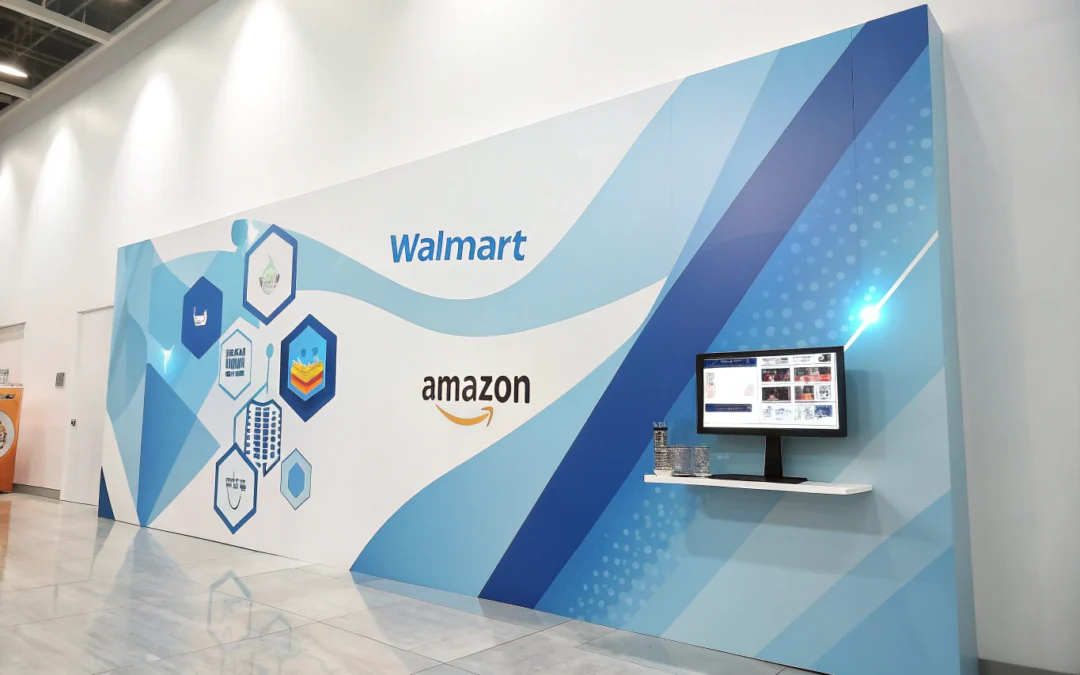Decoding the E-Commerce Labyrinth: Walmart vs Amazon
For entrepreneurs navigating the e-commerce landscape, choosing the right platform can feel like selecting the perfect starship for an intergalactic journey. Selling on Walmart vs Amazon offers insights into these two titans of online sales. Both platforms present unique opportunities and challenges, akin to choosing between a nimble X-wing or a robust Millennium Falcon.
The Ecosystem Dynamics
Amazon, the e-commerce behemoth, is akin to a bustling metropolis where anything and everything can be bought with a click. It’s a marketplace characterized by its vast customer base—over 300 million active users—offering sellers a significant reach. However, this also means navigating a highly competitive environment where standing out requires strategy and savvy.
On the other hand, Walmart’s marketplace, though smaller in scale, is rapidly growing. It draws from Walmart’s established brick-and-mortar presence and loyal customer base. For sellers, this translates to a less saturated market, offering a chance to carve out a niche without being swallowed by the competition.
Algorithmic Adventures
Amazon’s A9 algorithm is a complex beast, demanding sellers to master the art of search optimization, pricing strategies, and customer satisfaction metrics. Leveraging tools like the Vine Program can help new products gain visibility through early trusted reviews, improving their chances of ranking higher in search results. It’s like learning to pilot a starship through a dense asteroid field—challenging but rewarding for those who master it.
Walmart’s algorithm, while less daunting, presents its own set of demands. It places significant emphasis on price competitiveness and customer service. Sellers who can offer the best value and experience are likely to thrive, much like maneuvering through a less congested but still challenging star system.
Logistics and Fulfillment: The Supply Chain Galaxy
Amazon’s Fulfillment by Amazon (FBA) program offers a seamless logistics solution, akin to having an efficient droid handle your cargo. It frees sellers from the intricacies of shipping and customer service, allowing them to focus on growth. However, the cost of FBA can be prohibitive for some, eating into profits like a pesky mynock.
Walmart’s fulfillment services are evolving, with the Walmart Fulfillment Services (WFS) offering a competitive alternative. It’s a growing system, promising efficiency and reliability without the steep fees, making it an attractive option for those watching their margins closely. For those interested in optimizing their Walmart integration, exploring Software Solutions for Walmart Brand Portal Integration can provide valuable insights and tools to enhance their online presence.
Transformative Opportunities
Both platforms offer transformative opportunities for sellers willing to adapt and innovate. Amazon’s international reach and brand-building potential can catapult businesses into new markets. Entrepreneurs in the digital space can also take advantage of Amazon KDP (Kindle Direct Publishing) to expand their brand by publishing e-books, further monetizing their expertise while reaching a global audience. Meanwhile, Walmart’s integration of physical and digital retail offers unique omnichannel opportunities that can redefine customer engagement.
Actionable Recommendations for Sellers
- Analyze your product offerings and target audience to determine which platform aligns best with your business model.
- Invest time in understanding the specific algorithms and optimize your listings accordingly. Mastering these nuances can be the difference between obscurity and visibility.
- Consider logistics and fulfillment costs carefully. Leverage the strengths of FBA or WFS to streamline operations while keeping an eye on profitability.
- Stay agile and ready to adapt. The e-commerce landscape is dynamic, and the ability to pivot quickly can be a critical advantage.
Ultimately, the choice between selling on Walmart or Amazon is not just about where to list products, but how to strategically position your business for growth. Embrace the challenges and opportunities, and let the data guide your decisions.
Checkout ProductScope AI’s Studio (and get 200 free studio credits)

